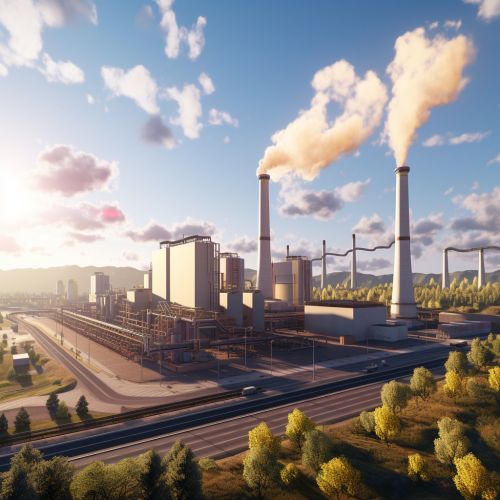Carbon Capture and Storage
Introduction
Carbon capture and storage (CCS) is a technology that can capture up to 90% of the carbon dioxide (CO2) emissions produced from the use of fossil fuels in electricity generation and industrial processes, preventing the CO2 from entering the atmosphere. The captured CO2 is then transported and stored underground in geological formations. CCS is considered a crucial strategy for meeting worldwide climate change mitigation goals.
Carbon Capture
The first step in CCS is the capture of carbon dioxide. This can be achieved through several methods, including post-combustion capture, pre-combustion capture, and oxy-fuel combustion.
Post-combustion capture
Post-combustion capture involves the removal of CO2 from flue gases after combustion. The most common method is amine scrubbing, where the flue gas is passed through a solution of amines, which bind with the CO2. The solution is then heated to release the CO2 in a concentrated form suitable for transport and storage.


Pre-combustion capture
In pre-combustion capture, the fuel is partially oxidized, creating a mixture of hydrogen and carbon monoxide. This mixture is then reacted with steam to produce CO2 and more hydrogen. The CO2 is then separated, captured, and stored.
Oxy-fuel combustion
Oxy-fuel combustion involves burning the fuel in pure oxygen instead of air. This results in a flue gas that is primarily CO2 and water, making the capture of CO2 much easier.
Carbon Transport
Once captured, the CO2 must be transported to a storage site. This is typically done via pipelines, which can be designed to transport the CO2 in either a gaseous or supercritical state. In some cases, the CO2 may also be transported by ship or truck.
Carbon Storage
The final step in CCS is the storage of CO2. This is typically done in geological formations, such as depleted oil and gas fields, deep saline aquifers, or unminable coal seams. The CO2 is injected into these formations, where it is stored indefinitely. This process is known as geological sequestration.
Environmental Impact
CCS has the potential to significantly reduce the amount of CO2 released into the atmosphere. However, there are also potential environmental risks associated with the technology, including the possibility of leaks from storage sites, the energy required for capture and transport, and the impact on ecosystems.
Economic Considerations
The cost of CCS is currently high, which is a significant barrier to its widespread adoption. However, with technological advancements and increased scale, the costs are expected to decrease. Additionally, policies such as carbon pricing can make CCS more economically viable.
Future of CCS
While CCS is currently used in a limited number of power plants and industrial facilities, it is expected to play a larger role in the future as countries strive to meet their climate change mitigation goals. Research is ongoing to improve the efficiency and reduce the cost of CCS, and to explore other potential applications of the technology.
